Recent Articles
Popular Makes
Body Types
10 Japanese Muscle Cars
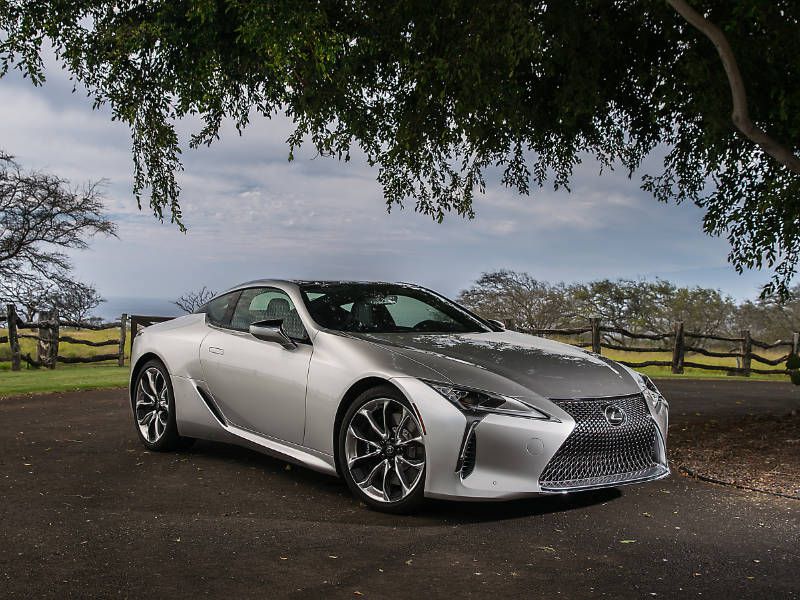
2018 Lexus LC 500 hero ・ Photo by Lexus
This list of 10 Japanese muscle cars brings to mind one extremely important point: This class of vehicle isn't commonly associated with the Land of the Rising Sun. In the U.S., the accepted definition of a muscle car has traditionally been a coupe with a big V8 engine under the hood that drives just the rear wheels. The “muscle” part comes from how powerful that V8 might be. Think of a 2018 Dodge Challenger SRT Hellcat and its 707 horsepower. Japanese car culture is a different animal, so its muscle cars don’t follow the same script. But that’s the good thing about diversity and choice. For a workable definition of “Japanese muscle car,” we’re going with machines from Japanese automakers with plenty of power. And by these broader criteria, Japan offers a host of appealing options, which we've listed alphabetically.
2018 Acura NSX
Muscle cars aren't normally hybrids — but this isn’t a normal hybrid. It’s more like the future of supercars. As well as a twin-turbocharged 3.5-liter V6, the NSX has three electric motors for a system output of 573 hp and 476 lb-ft of torque.
While muscle cars are not renowned for their intelligence, the NSX’s drivetrain is controlled by computers. They monitor everything, many times each second, and will send different amounts of power to individual wheels so the car can take corners at scary-hilarious speeds. Throw most cars into a tight turn and the front tires screech in surrender, breaking into understeer. Do that with the NSX and it almost asks, “What else you got?”
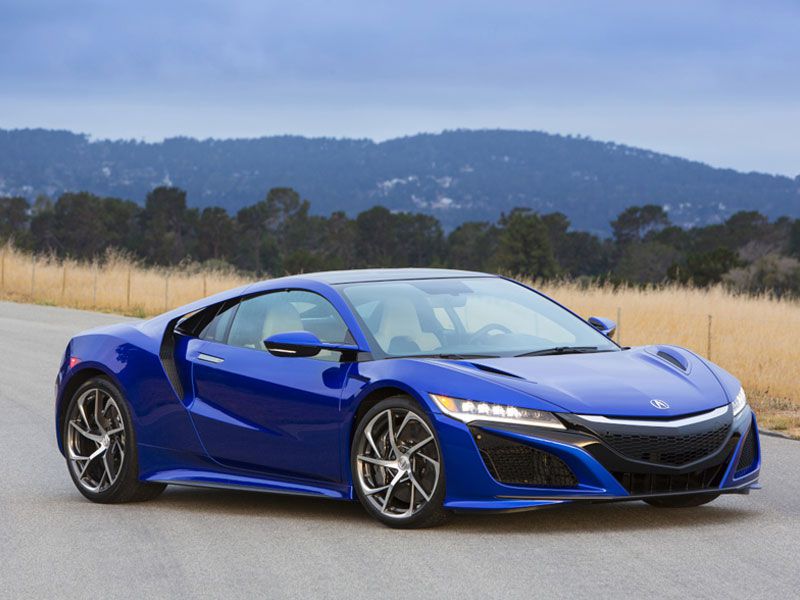
Photo by Acura
2018 Honda Civic Type R
By rights, this car belongs in a “10 best hot hatchbacks” list — but it’s so hot that it can drive right into this one, too. A turbocharged 2.0-liter four-cylinder engine makes a stunning 306 hp and 295 lb-ft of torque. That’s not the most powerful turbo four in production, but it’s pretty near the top.
A six-speed manual transmission sends power to the front wheels, and a helical limited-slip differential combats understeer where the front tires would turn to mush. In practice, that means honing one’s cornering line by attenuating the amount of throttle. It’s not the typical kind of muscle-car fun, but still an absolute hoot.

Photo by Honda
2018 Infiniti Q60 Red Sport 400
This is more like a traditional muscle car. It’s a premium compact coupe with a big engine up front. Not a V8, but a twin-turbocharged 3.0-liter V6 making a highly respectable 400 hp and 350 lb-ft of torque. Infiniti says it’s the cleanest, most powerful and most fuel-efficient turbo V6 it has ever produced. The Q60 was new for last year, so it’s still really fresh. All-wheel drive is available, but as a convincing muscle car, the default rear-drive setup works fine.
To be clear, just because this top-line version of the Q60 is called “Red Sport” it doesn’t mean that’s the only exterior color. It can also come in blue, white, black or silver.
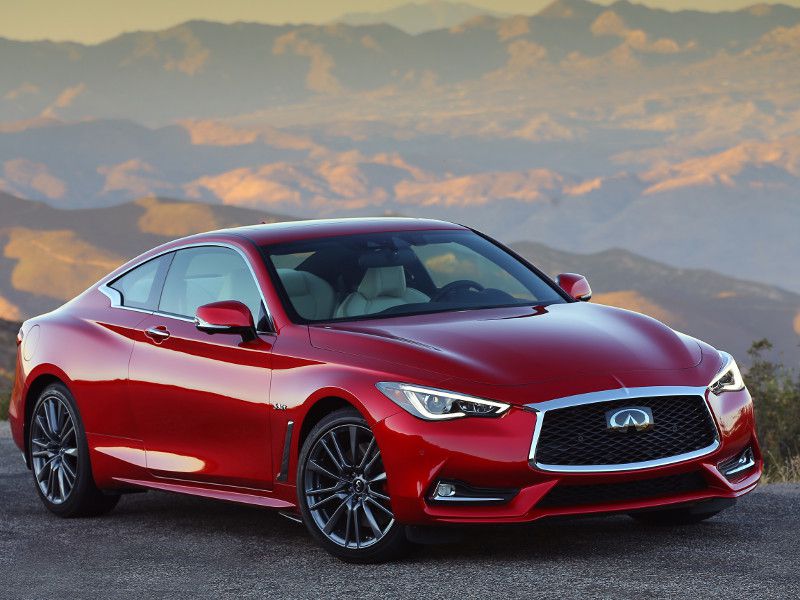
Photo by Infiniti
2018 Infiniti Q70
This premium mid-size sedan doesn’t appear much like a muscle car at first. But a peek under the hood reveals an honest-to-goodness V8 engine, a rarity from the Japanese motor industry. This one is a 5.6-liter rumbler generating 420 hp and 417 lb-ft of torque. That’s the sort of push and effortless power delivery we’ve all come to expect from muscle cars. It’s almost begging for the driver to lean an elbow out the window and give it some extra throttle when going through tunnels. Rear-wheel drive is the standard setup, so there might even be scope for tire smoke on occasion. The Q70’s makers might wince at such behavior, but surely that’s half the fun.
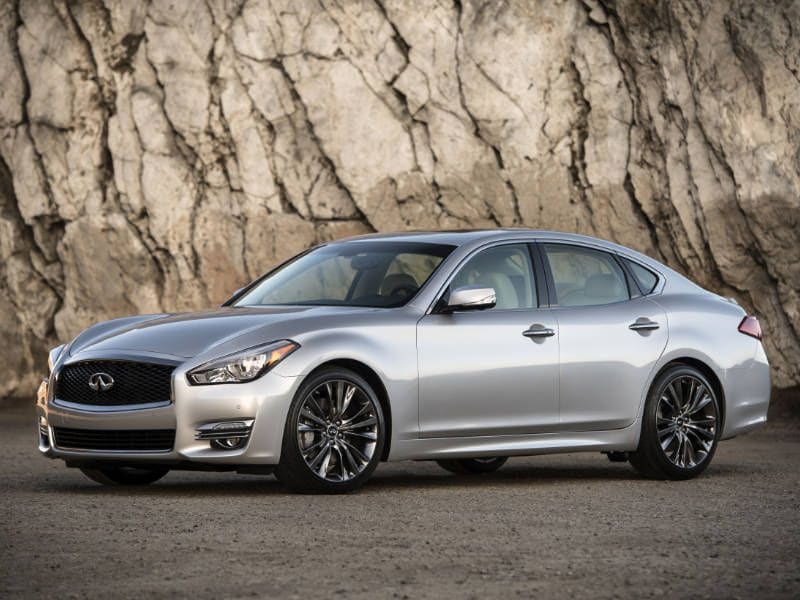
Photo by Infiniti
2018 Lexus LC 500
This is an all-new model for 2018, based on essentially the same platform as Lexus' upcoming redesign of its LS flagship sedan. And even though the LC is a fresh idea for Lexus, there’s something reassuringly traditional about the layout. Propulsion comes courtesy of a 5.0-liter V8 delivering 471 hp and 398 b-ft of torque to the rear wheels (through a 10-speed automatic transmission, the modernistic bit). And the 20-inch wheels are almost large enough to be called brash. Someone at Lexus gets it, finally. The LC also offers the option of a torque-sensing limited-slip mechanical differential — invented by an American, incidentally.
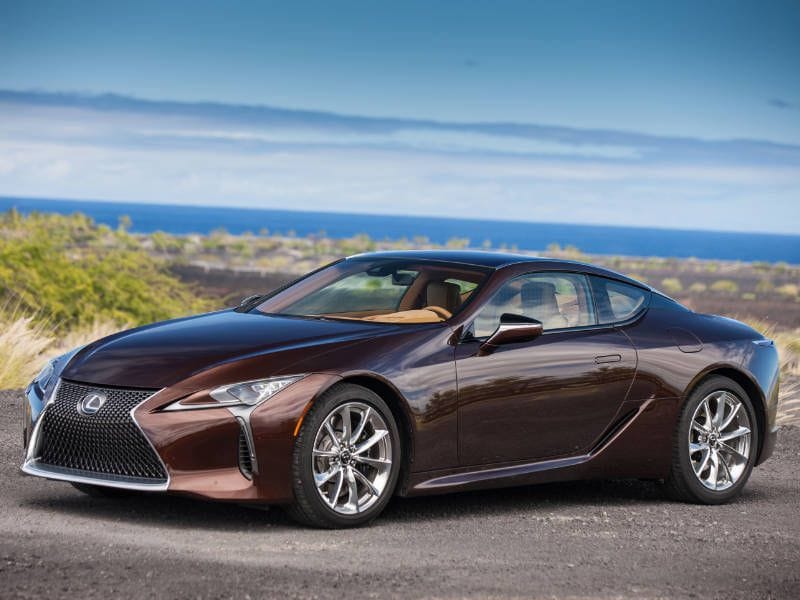
Photo by Lexus
2018 Lexus RC F
Thank goodness for Lexus, because if there weren’t a few interestingly muscular cars from this marque, its Toyota parent would be coming up completely empty. The RC F is a premium compact coupe with its brand's usual impeccable build quality. But it also has an unusual 5.0-liter V8 thrumming away under the hood, endowing the car with 467 hp and 389 lb-ft of torque — blasting it from standstill to 60 mph in just 4.4 seconds. Naturally, there are all sorts of clever driver aids as well, like a traction control system that lets the nut behind the wheel slide the tail out a bit before gathering everything up and acting civilized again.

Photo by Lexus
2018 Nissan 370Z
We included the 370Z mainly because it fits a little easier into the front-engine/rear-drive muscle car template. And Z cars have held a special place in drivers’ hearts ever since the earliest versions from the 1970s. The current 370Z enjoys a 3.7-liter V6 making 332 hp and 270 lb-ft of torque. That’s a cool amount of power for what is still a cool car.
One thing that isn’t mentioned much about the 370Z is that it has a carbon fiber driveshaft. That means less weight in general compared with a steel shaft, and also less rotating mass, so throttle response can be even crisper and more precise.
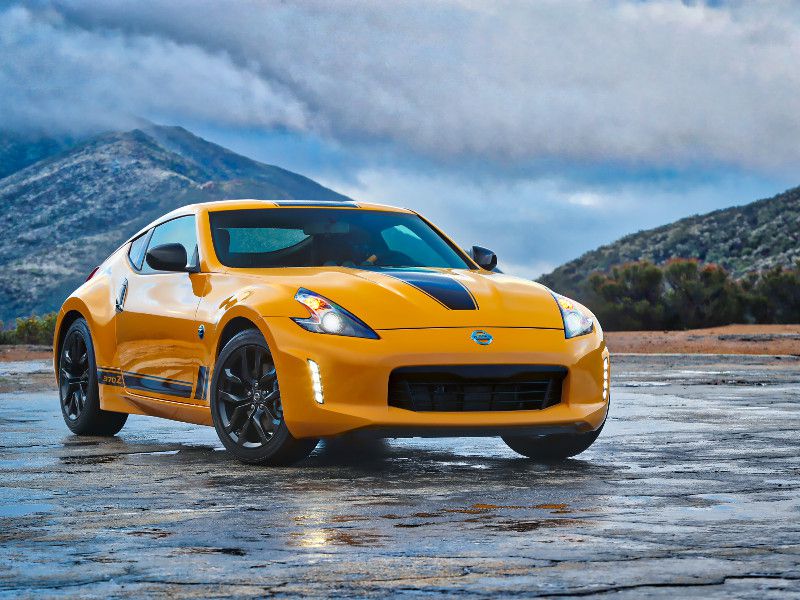
Photo by Nissan
2018 Nissan GT-R
The GT-R is possibly the ultimate Japanese muscle car. A twin-turbo 3.8-liter V6 is the throbbing heart and all four driven wheels are its sinewy limbs. It’s enough of a beast to earn the nickname of “Godzilla.” In its extreme Nismo incarnation (a contraction of "Nissan" and "motorsport"), there lurks a monstrous 600 hp and 481 lb-ft of torque.
Nissan doesn’t quote a zero-to-60 mph time, but under three seconds (using launch mode) is probably achievable. As constant reminders that this is a muscular machine, the GT-R has things like a lap data recorder, an intelligent all-wheel drive setup and a titanium exhaust system.

Photo by Nissan
2018 Nissan Maxima
While Nissan’s tendency to call the Maxima a “four-door sports car” might seem like optimistic marketing whimsy, the company at least had the decency to fit this roomy front-drive sedan with an engaging suspension setup and a lusty 300 hp and 261 lb-ft of torque from a 3.5-liter V6. This award-winning engine powers various Nissan and Infiniti vehicles.
In this context, we’re favoring the SR trim level because its suspension tune is sportier than other Maximas and its Integrated Dynamics Module brings a greater range of ride quality adjustment. The aluminum sports pedals, 19-inch alloy wheels and steering wheel-mounted paddle shifters all help to create more of a performance car vibe.
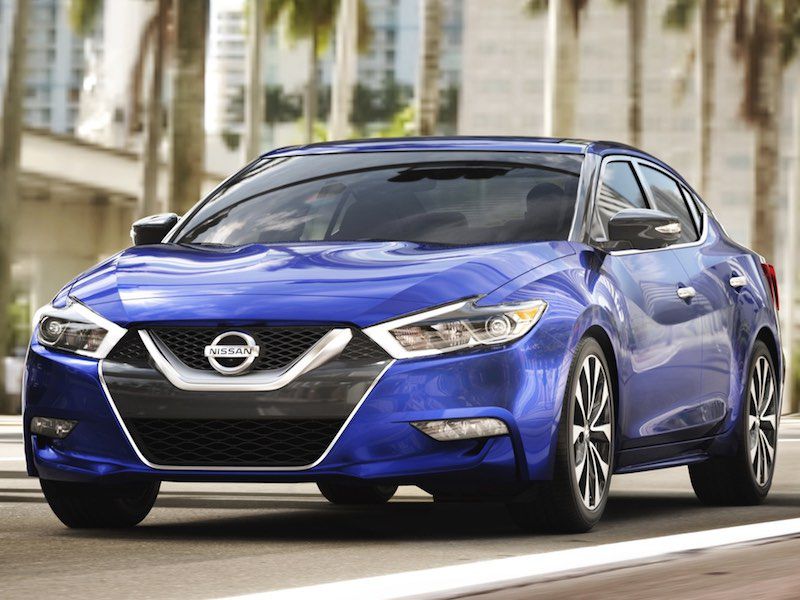
Photo by Nissan
2018 Subaru WRX STI
While the regular Impreza compact car — on which the WRX line is based — has moved into a fresh generation, the 2018 WRX STI sedan sticks with the outgoing hardware. That’s not a criticism. When a car throws down a turbocharged 305 hp and 290 lb-ft of torque onto the pavement through a race-bred all-wheel drive system, there aren’t many nits to pick. Especially when it starts at under $40,000.
Traditional muscle cars might be best suited to drag racing, but this kind of Japanese muscle is the result of a wildly successful adventure with rallying — a less popular form of motorsport in the United States, but one that demands the most incredible car control skills and a massive dose of fearlessness.
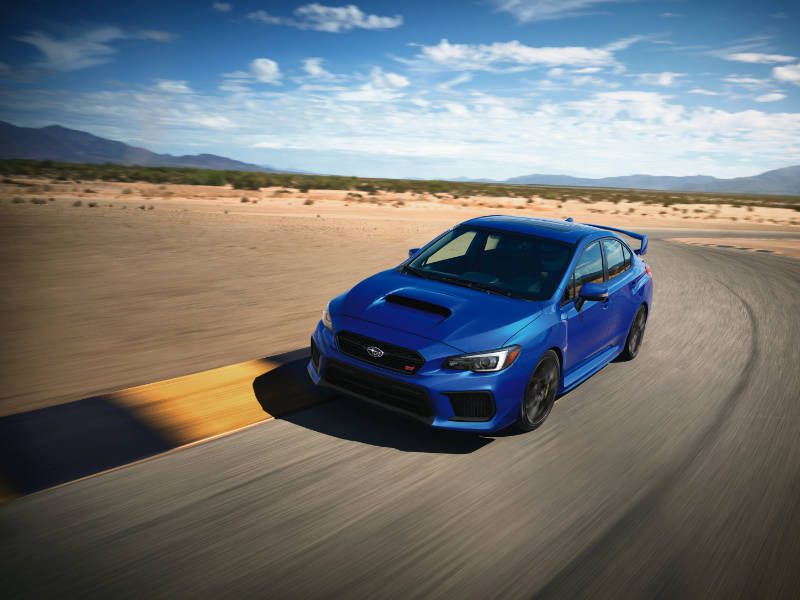
Photo by Subaru